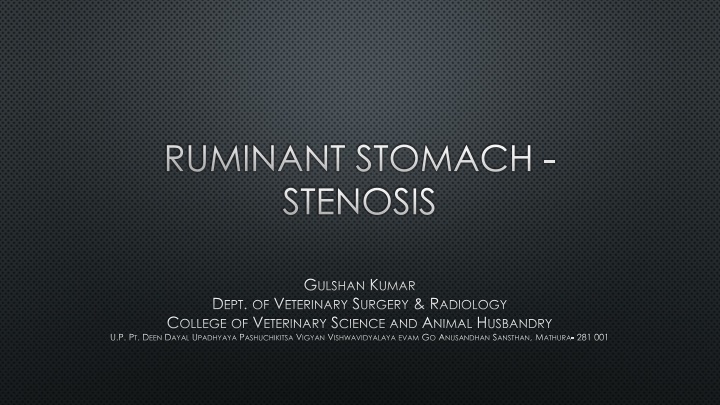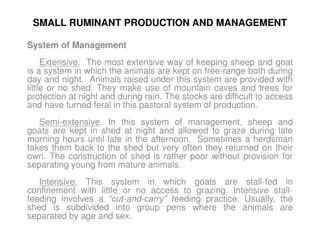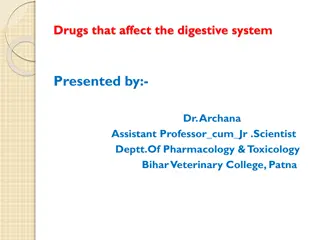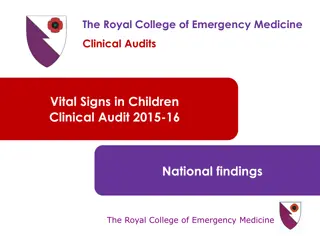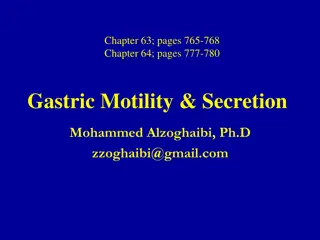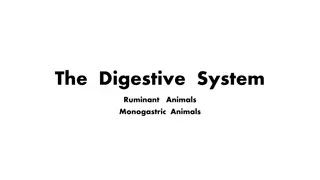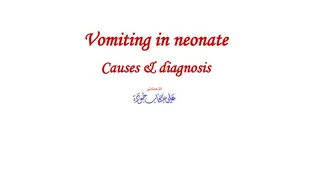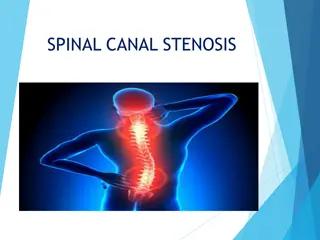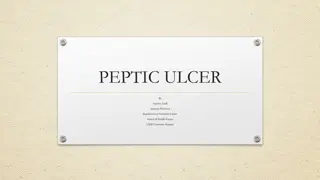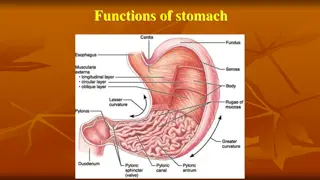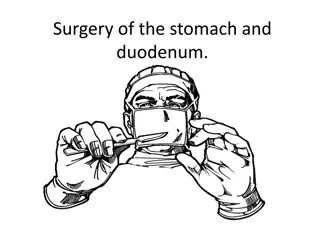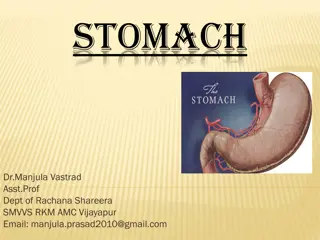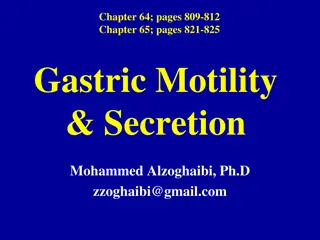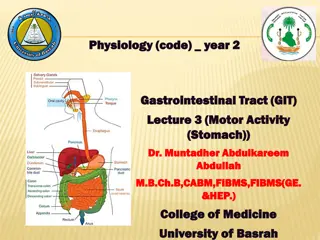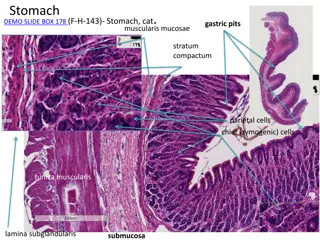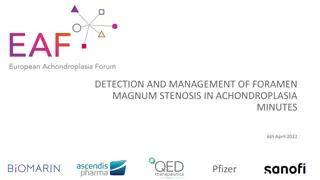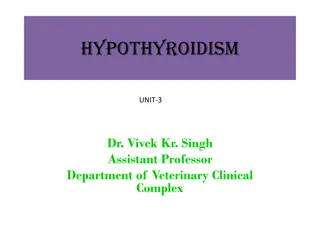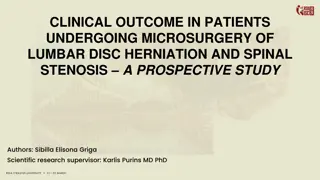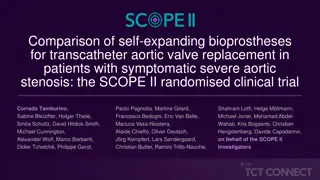Ruminant Stomach Stenosis - Clinical Signs & Diagnosis
Ruminant stomach stenosis, whether cranial or caudal, can lead to chronic indigestion in animals. Clinical findings include abdominal distention, papple-shaped abdomen, reduced milk production, and dehydration. Diagnosis is based on rumino-reticular distention, and laparo-rumenotomy may be necessary for treatment.
Download Presentation

Please find below an Image/Link to download the presentation.
The content on the website is provided AS IS for your information and personal use only. It may not be sold, licensed, or shared on other websites without obtaining consent from the author.If you encounter any issues during the download, it is possible that the publisher has removed the file from their server.
You are allowed to download the files provided on this website for personal or commercial use, subject to the condition that they are used lawfully. All files are the property of their respective owners.
The content on the website is provided AS IS for your information and personal use only. It may not be sold, licensed, or shared on other websites without obtaining consent from the author.
E N D
Presentation Transcript
RUMINANT STOMACH - STENOSIS GULSHAN KUMAR DEPT. OF VETERINARY SURGERY & RADIOLOGY COLLEGE OF VETERINARY SCIENCE AND ANIMAL HUSBANDRY U.P. PT. DEEN DAYAL UPADHYAYA PASHUCHIKITSA VIGYAN VISHWAVIDYALAYA EVAM GO ANUSANDHAN SANSTHAN, MATHURA- 281 001
RETICULO- OMASAL & PYLORIC STENOSIS Clinically, two types of stenoses are seen in ruminants: Cranial Functional Stenosis (reticulo- omasal stenosis) Caudal Functional Stenosis (pyloric stenosis) An animal may suffer from any one of these two or both. Functional stenosis causes chronic indigestion called Vagal Indigestion or Hoflund s Syndrome (syndrome described by Hoflund in 1940). So it is such a dysfunction which impairs the passage of ingesta from the reticulo-rumen to the abomasum or from abomasum into the intestine. Note: Although termed vagalindigestion , the vagus nerve may not always be associated in all cases of indigestion.
CLINICAL FINDINGS Gradual development (over days to weeks) of abdominal distention secondary to rumino-reticular distention. Distention of the dorsal and ventral sacs of the rumen results in an L-shaped rumen on rectal examination. Left dorsal and left and right ventral distention of the abdomen causes a papple (pear + apple) shape as viewed from behind. Diminished appetite, which typically improves temporarily if distention is relieved.
Papple shaped Abdomen
CLINICAL FINDINGS Milk production falls, scant and sticky faeces, splashy fluid consistency of rumen. Rumen motility is often increased (3 4 contractions/min) but contractions are weak. Dehydration in later stages.
DIAGNOSIS Diagnosis is based on the presence of subacute to chronic rumino- reticular and abdominal distention. Other causes of abdominal distention, such as ascites and uterine enlargement, are included in the differential diagnosis which can be excluded by rectal palpation because of the absence of rumino- reticular distention.
TREATMENT AND PROGNOSIS Medical management alone is usually ineffective. Laparo-rumenotomy is indicated to remove stenosis/obstruction (a foreign body, abscess etc.) in cranial functional stenosis. However, it is debatable in caudal functional stenosis. Cathartics may be advised to promote evacuation of the gastrointestinal tract. Low plasma K and Cl levels prevent resumption of pyloric function, intravenous administration of dextrose saline with k and Cl has been reported to have given favourable results.
